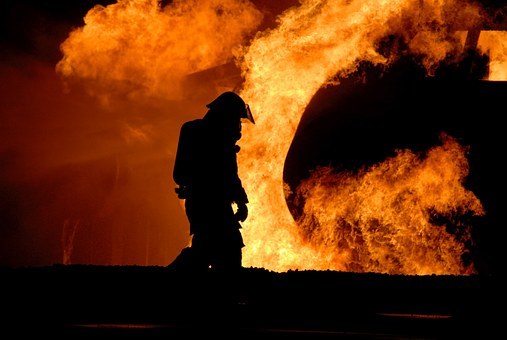Fire Safety in the Workplace
December 24, 2018

How well prepared is your workplace for the event of a fire? Do you believe your business could recover from the losses in the event that one occurs? Has your business taken all the right steps towards prevention and preparation? Okay, that’s a lot of questions to open things with, but for good reason. The U.S. Small Business Administration claims that as many as 25% of small businesses can’t recover from a major loss from fire damage. What’s more, the National Fire Prevention Association (NFPA) reports that the cumulative damages from fire cost well into the billions in the commercial sector.
The first step in taking effective preventative measures in your business is by identifying where the highest threats are, and taking the necessary steps towards removing the risks and containing potential damage. Fortunately, we’ve done the legwork on compounding data. Want to protect your workplace? Here is what we suggest!
Avoid kitchen catastrophes!
Kitchens are where most fires start in almost every workplace, but are far and away more common in retail and offices. Unsurprisingly, the most common time for a fire to occur is Noon – 2p.m. when most employees will be taking their lunch breaks. Fortunately, while the kitchen is the most common point of origin for a fire, it also happens to be the least threatening and the easiest to contain. Only 6% of total property damage is caused from these fires.
Taking precautions here are pretty basic. Always keep any kitchen area in your workplace stocked with a working fire extinguisher, as it is the single best tool for containing a fire once it has started. Keep your kitchen counter free of clutter, and keep any flammable materials at least three feet away from the stovetop. Make it a policy in your workplace that employees must remain present while their food is cooking. If your office kitchen has appliances such as coffer makers, toasters, or microwaves, make sure that the cords and outlets are undamaged and that there are no frayed wires or damaged plug-ins.
Monitored smoke and heat detectors
While the bulk of fires, nearly 70%, occur during daytime hours (7a.m. – 7p.m.) the most damaging fires regularly occur at night time. Smoke detectors are necessary in your workplace, but if they aren’t monitored, they won’t do much other than alert anyone present that a fire is in the building. Without having employees present to report or contain a fire early, it can quickly scale out of control, leaving the fire responders with little left to save.
So, what do monitored smoke and heat detectors do? They’re an invaluable part of any commercial security system, that will alert live operators immediately in the event smoke or extreme heat is detected. The operators can then confirm the threat and dispatch the appropriate response team. A fire occurring while your business is closed will oftentimes leave nothing behind to save. If you have a sprinkler system in your workplace, don’t presume you are safe from fires. The NFPA reported that they were only effective 88% of the time. While that is still a pretty high effectiveness rate, it’s not something you should gamble the health of your business on.
Create a plan
In the event a fire occurs during business hours, and it cannot be contained, you need to have a plan as well as a staff of employees who know what to do. This is especially important if you work a job where customers are in your workplace, as their safety is your responsibility. While it may seem like evacuating a building is a simple procedure, you cannot allow yourself to underestimate the dangers of fire. It takes less than thirty seconds for a small flame to become a massive threat. Worse, after only two or three minutes, a thick black smoke can fill your workplace, disrupting visibility, and making breathing both difficult and dangerous.
A quick reaction is a must. Schedule, plan, and practice an evacuation procedure with your staff at least twice a year. Make sure you have floor plans with escape routes located in your workplace, and have exits clearly labeled. Additionally, plan multiple escape routes, and have two meeting locations outside of your workplace for employees to gather. Getting a headcount can confirm whether or not any other employees are still trapped in the building- information that, once provided to firefighters, can save lives.
Prepare, plan, and practice. Keep your workplace safe from the threat of fire!

